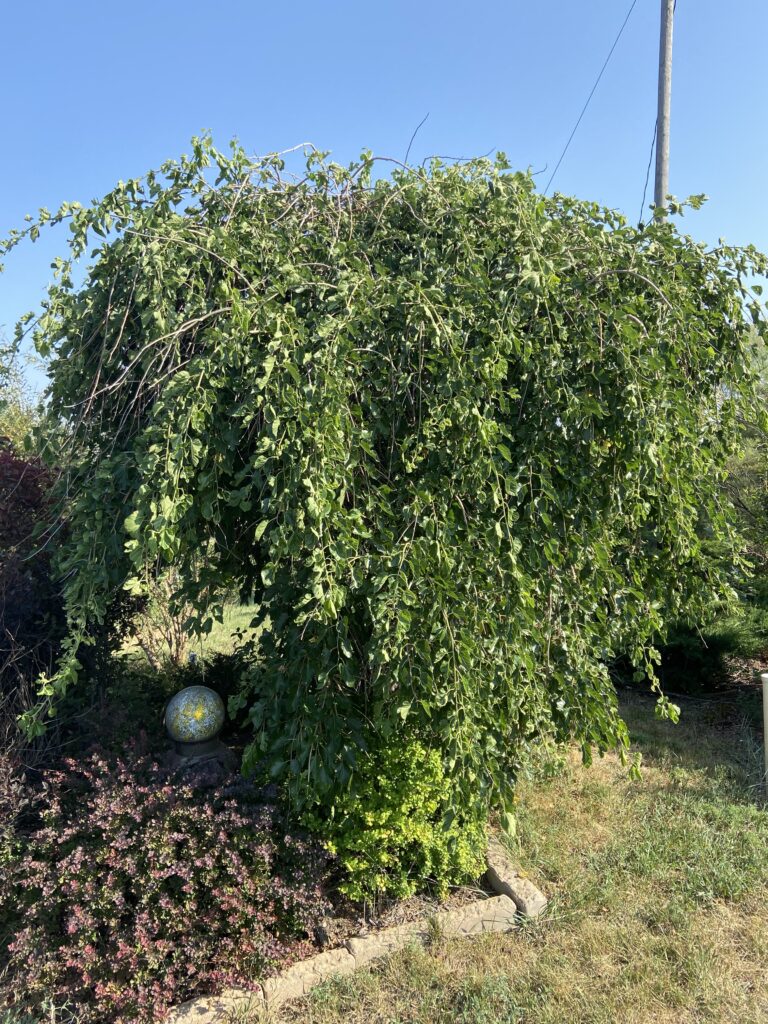Many of us that plant shrubs and trees, anything that will take the heat of summers and the cold of winters. While that is the main consideration, there are others like leaf color, growth habit, fruit, and so on. A weeping mulberry is a good example of growth habit and form.

Take my weeping white mulberry tree. The variety is “Chaparral” which is a male cultivar making this tree fruitless. Planting a weeping tree does make a statement. The Chaparral grows up to fifteen feet with branches coming to the ground. Once established it is drought tolerant. Also, mulberries have no pest or disease problem, and deer leave them alone.
This variety comes from the white mulberry tree, which is native to Asia, however, is naturized in this country. It is the food for the silkworm and was why it was imported to the United States. The silkworm industry was short-lived, and the tree was grown for shade and fruit. The two other mulberries are black and red which are native to Europe and North America.
Mulberries have male and female trees, and it takes two of these trees to produce fruit on the female tree. Many people find the fruit very messy in the landscape, which is why you want to look at getting a male variety.
One note, the weeping mulberry tree is very slow in leafing out waiting till the end of May.
